






HubSpot is a powerful platform that can greatly enhance your digital marketing efforts. With its numerous features and tools, it's important to understand how to make the most of this platform. In this article, we will provide you with 20 tips that will help you maximise your use of HubSpot and make your flywheel spin faster.
Understanding HubSpot: An Overview
Before diving into the tips, let's start with a brief overview of what HubSpot is. At its core, HubSpot is an all-in-one inbound marketing, sales, and service software. It offers a comprehensive suite of tools designed to help businesses attract, engage, and delight customers throughout their buyer's journey.
HubSpot is not just another tool; it's a game-changer for businesses of all sizes. Whether you're a small startup or a large enterprise, HubSpot provides the resources and features you need to succeed in today's digital landscape.
HubSpot's Impact on Revenue
According to a report conducted by BEALL in 2023, research has shown that the use of HubSpot software has numerous benefits for organisations, including improved revenue and enhanced customer experiences in terms of efficiency, time savings, marketing efforts, and analytics.
Implementing HubSpot software often leads to significant revenue growth for most customers, with an average increase of over 10%. These positive results are typically seen soon after the software's implementation.
HubSpot software has proven to be instrumental in various areas, such as identifying sales leads, enhancing tracking capabilities, strengthening customer relationships, optimising marketing and email campaigns, streamlining processes, implementing automation, improving management practices, and saving time.
So, all that being said, how can you get the most out of using HubSpot?
20 Tips To Get The Most Out Of HubSpot
1. Create a HubSpot Implementation Plan
It's natural for different people to have different viewpoints. You like ham and pineapple pizza whilst your friend prefers a meat feast. You prefer action films whilst your sister always chooses a comedy.
The same is true in a business context. Different perspectives mean that marketing, sales, service and operations teams rarely agree on every business process, and often develop their own unique ways of working. Internal politics and information silos can end up creating a mediocre solution that lacks direction and fails to delight anyone.
So whilst variety may be the spice of life, unfortunately, it's these different perspectives that lead to misalignment across departments and cause problems for your business.
During your HubSpot implementation plan or optimisation plan (depending if your new to HubSpot or an existing user), you're going to want to map out the following:
- Map out your current user journey and identifying areas to amend, automate and align within the HubSpot CRM.
- Map out which HubSpot tools will be needed, operational workflow builds and related reporting requirements.
- Identify existing friction points across your business by speaking with stakeholders
- Define your ideal customer profile
- Create the framework for HubSpot lead scoring
2. Limit the Fields You Use In Your CRM Interface
Too much info is as bad as too little, so when you are designing the CRM interface you need to tailor it to have the right information for the task at hand.
A good tip for this is to use conditional record customisation in HubSpot where based on a basic set of rules you can show relevant fields. So, for example at qualification stage you can bring up your "BANT" fields and Closed Won you can bring up "Closed Won" reason and the fields that finance need to proceed with the next steps.
To do this go to your object settings in HubSpot and pick the relevant object. From here you will see the record customisation option. Select “Left hand side” and then this will bring you into the customisation screen. Name your new section and select the fields you want to see in it. From here on the left there will be a “Make section conditional” option. If you select this you can then set the criteria that once met will cause the section to change.
Once you make these changes everyone in the company or team you have selected will have the new fields set on the object.
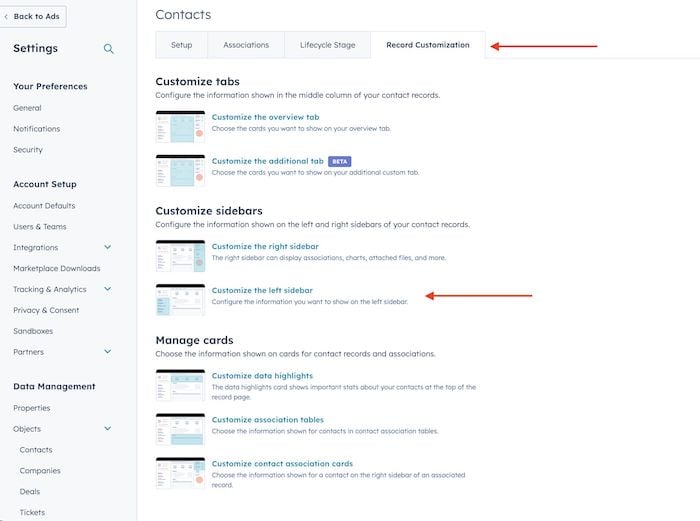
3. Use Multiple Score Properties in HubSpot
The default "HubSpot score" property typically only represents lead quality, if it is used at all. However, in HubSpot, you have the option to create multiple "score" properties. These properties allow you to input specific criteria and generate a weighted score based on those variables. By creating different score properties and analysing the connection between behaviours and data points in your CRM, you can gain more insight into every opportunity.
We recommend creating three scores: one for lead qualification based on your qualification process (e.g., B.A.N.T, M.E.D.D.P.I.C.C®), one for client fit based on your Ideal Client Profile (e.g., industry, revenue, location), and one for the relationship with the buying group based on communication frequency and recency (e.g., meetings booked, emails sent, time between last activity).
Once you have these scores in place, you can prioritise deals more effectively by focusing on those with higher relationship and qualification scores. You can also use "horizon charts" to gain a better understanding of which deals to prioritise based on their value, relationship, qualification, and fit.
Testing your lead score in HubSpot can be done on the contact object. Simply go to your settings, navigate to properties, open up your score property, and look for the "Test Score Criteria" button. By testing a few examples, you can determine if your scoring is working as intended.
This simple change in your CRM can provide your sales teams with more insight and make reporting more actionable across the team.
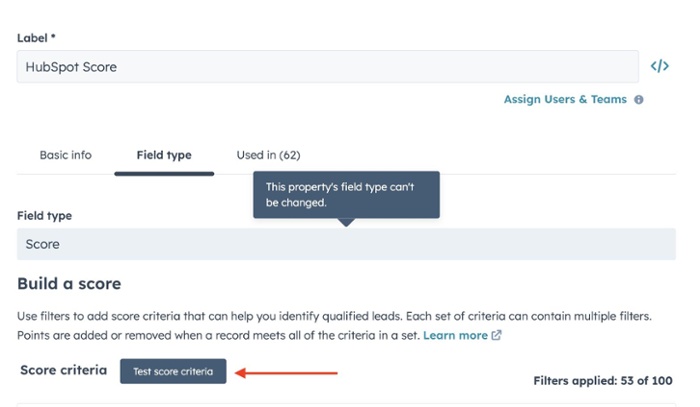
4. Reduce Free Text Fields,Introduce sister fields, Validation and Permissions
Free text fields are a nightmare for anyone who wants clean data. They have their uses but they cause endless headaches when deployed too much in key areas of your CRM.
The ideal for the data in your system is for it to be structured, consistent, and accurate. When data is structured and consistent, it's easier to analyse and report on.
BUT, Having an overly structured CRM can also create rigidity and prevent you from gathering much needed context in more nuanced areas.
So, what is our solution?
Property validation, permissions and “Sister fields”.
Property Validations
Property validation is putting in rules for what can go in to the property. This can be done by going into each property and clicking on the “Rules section”. Here you can prevent special characters, put min/max amounts on a property etc.
Permissions
You can also put permissions on individual properties making them editable by only certain users or teams. A great use case for this is setting up governance processes by pairing a permissions with mandatory steps in the pipeline i.e. this deal can’t progress without “Reviewed by Manager = Yes” but “Reviewed by manager property can only be changed by the “Management team.
Sister Fields
Sister fields are a really simple approach but lets say that you have a “Solution fit field” that is a dropdown It can have several options like “Meets Sales Need, Meets Operations need etc”. By having your sales team fill this in, your data team will be happy because they can aggregate this in seconds.
A sales manager may need more information, so you create a “Sister field” called “Solution fit description” which is a free text field.
In this field the rep can share all the reasons the solution is the right fit and give the sales manager much deeper context into the nuances of the information.
5. Use Progressive Profiling in HubSpot
Progressive profiling is a powerful feature in HubSpot that allows you to gather more information about your leads over time, without overwhelming them with too many form fields upfront. Instead of bombarding your visitors with a long form asking for all their information at once, progressive profiling allows you to gradually collect data from them as they interact with your website and fill out forms.
The beauty of progressive profiling lies in its ability to create a personalised and tailored experience for your leads.
To implement progressive profiling in HubSpot, start by identifying the most important information you need from your leads and create questions based on your buyer personas.
As your leads continue to engage with your content and fill out forms, use HubSpot's progressive profiling feature to gradually introduce new fields that you want to gather data on.
6. Automatically Assign Buyer Personas using Simple Automation in HubSpot
With HubSpot's simple automation features, you can automatically assign buyer personas based on specific criteria and data points. This not only saves time and effort but also ensures that your marketing and sales teams have a clear understanding of who they're targeting.
To implement this automation, start by defining the different buyer personas that align with your target audience.
Next, set up automation rules in HubSpot based on the criteria associated with each buyer persona. For example, you can use contact properties like job title, industry, or company size to determine which persona a contact belongs to. HubSpot's automation tools allow you to create workflows that automatically update a contact's persona based on these criteria.
By automating the assignment of buyer personas, you ensure that your marketing and sales teams have accurate and up-to-date information about your leads. This enables them to tailor their messaging and strategies to resonate with each persona, increasing the chances of converting leads into customers.
7. Use HubSpot's SEO Tools Before Setting Blog Posts Live
One of the first things you should do before setting your blog posts live is to utilise HubSpot's Topic Clusters feature. This feature helps you create a more cohesive and interconnected content strategy by linking related pages together. By ensuring that every page is connected to a pillar page, you are not only improving the user experience but also signalling to search engines the relevance and authority of your content.
In addition to Topic Clusters, HubSpot's SEO tools also provide keyword research capabilities.
Once you have identified the relevant keywords, it's time to optimise your blog post using HubSpot's Optimise tab. This tab provides you with valuable insights and recommendations on how to improve your on-page SEO. From optimising your meta tags and headers to ensuring proper keyword placement and density, HubSpot's Optimise tab guides you through the process of making your blog posts more search engine-friendly.
By taking advantage of HubSpot's SEO tools, you can ensure that your blog posts are fully optimised before they go live. This not only helps improve your search engine rankings but also increases the visibility and discoverability of your content.
8. A/B Testing
A/B testing eliminates all the guesswork out of website optimisation and enables experience optimisers to make data-backed decisions. In A/B testing, A refers to the 'control' or the original testing variable, while B refers to the 'variation' or a new version of the original testing variable.
This testing method can be applied to various aspects of your marketing strategy, including emails, buttons, and landing page content. By implementing A/B testing in HubSpot, you can gain valuable insights into what resonates best with your audience and optimise your campaigns accordingly.
A/B Testing in Emails
For example, when conducting A/B testing on emails, you can test different subject lines, email copy, and call-to-action buttons to determine which version generates higher open rates and click-through rates. By analysing the results, you can refine your email marketing strategy and create more engaging and effective campaigns.
A/B Testing in Landing Pages
Similarly, A/B testing can be used on landing pages to determine which layout, design, or content format leads to higher conversion rates. By creating multiple variations of your landing page and testing them against each other, you can identify the elements that drive the most conversions and optimise your landing pages for better results.
The key to successful A/B testing is to define clear goals and metrics to measure the success of each variation. It's important to test only one variable at a time to accurately determine its impact on the desired outcome. Additionally, it's crucial to ensure that your test sample size is statistically significant to draw reliable conclusions.
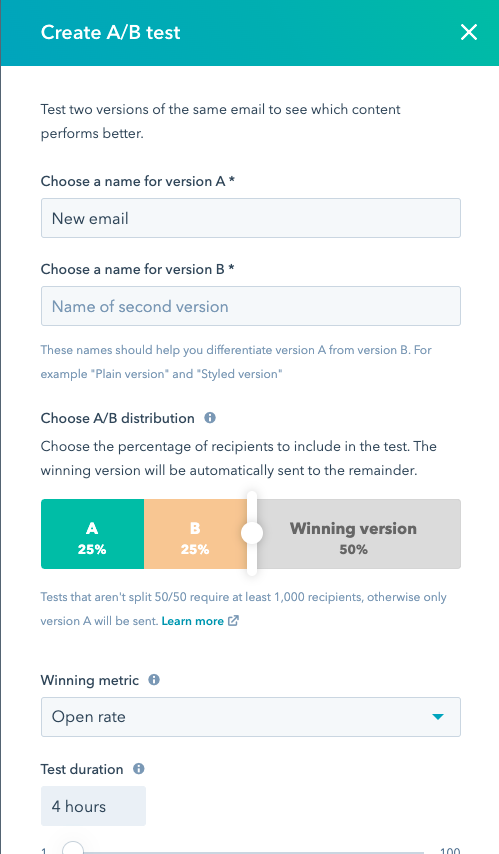
9. Use Pop-Up Call To Actions to Improve Conversions
Pop-up call to actions (CTAs) are a powerful tool in your marketing arsenal. They can significantly improve conversions by capturing the attention of your website visitors and guiding them towards the desired action.
Timing is crucial when it comes to pop-up CTAs. You want to catch your visitors' attention without interrupting their browsing experience. Consider setting the pop-up to appear after a certain amount of time spent on the page or when the visitor is about to exit. This way, you can capture their attention before they leave.
Pay attention to the design of your pop-up CTA to make it visually appealing and attention-grabbing. HubSpot has a new call to action builder which allows you to easily build a report on call to actions, including Pop-Ups.
but, just like any other marketing strategy, it's important to test different variations of your pop-up CTAs to determine what works best for your audience. Test different designs, copy, and offers to see which combination generates the highest conversion rate. HubSpot's A/B testing feature can be useful in this process.
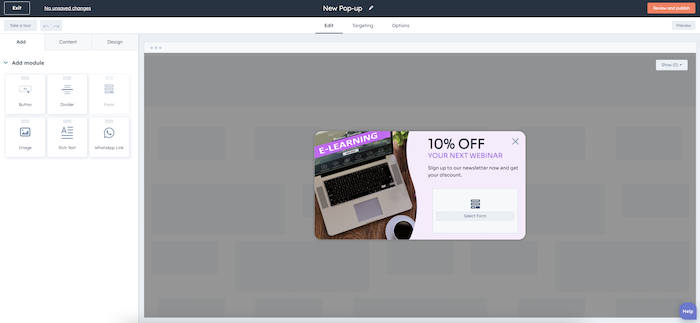
10. Merge Duplicate Contacts and Companies in HubSpot
Merging duplicate contacts and in HubSpot is a straightforward process. Start by identifying the duplicates that need to be merged. HubSpot provides various filters and search options to help you locate these duplicates quickly.
Once you have identified the duplicate contacts, navigate to the contact record of one of the duplicates. From there, click on the "Actions" dropdown menu and select the "Merge" option. HubSpot will then guide you through a step-by-step process to merge the duplicate contact with its counterpart.
11. Fix Formatting issues in the HubSpot Data Quality Command Centre
The HubSpot Data Quality Command Centre is an invaluable tool for businesses looking to maintain clean and accurate contact records. One of the key features of this command centre is the ability to identify formatting issues within contact company records. With the help of artificial intelligence, HubSpot can quickly flag potential formatting errors, ensuring that your data is consistent and error-free.
Formatting issues can arise for various reasons, such as inconsistent capitalisation, improper spacing, or incorrect use of punctuation. These seemingly minor errors can have a significant impact on the professionalism and credibility of your business. By utilising the Data Quality Command Centre, you can easily spot and rectify these formatting issues, ensuring that your contact records are polished and presentable.
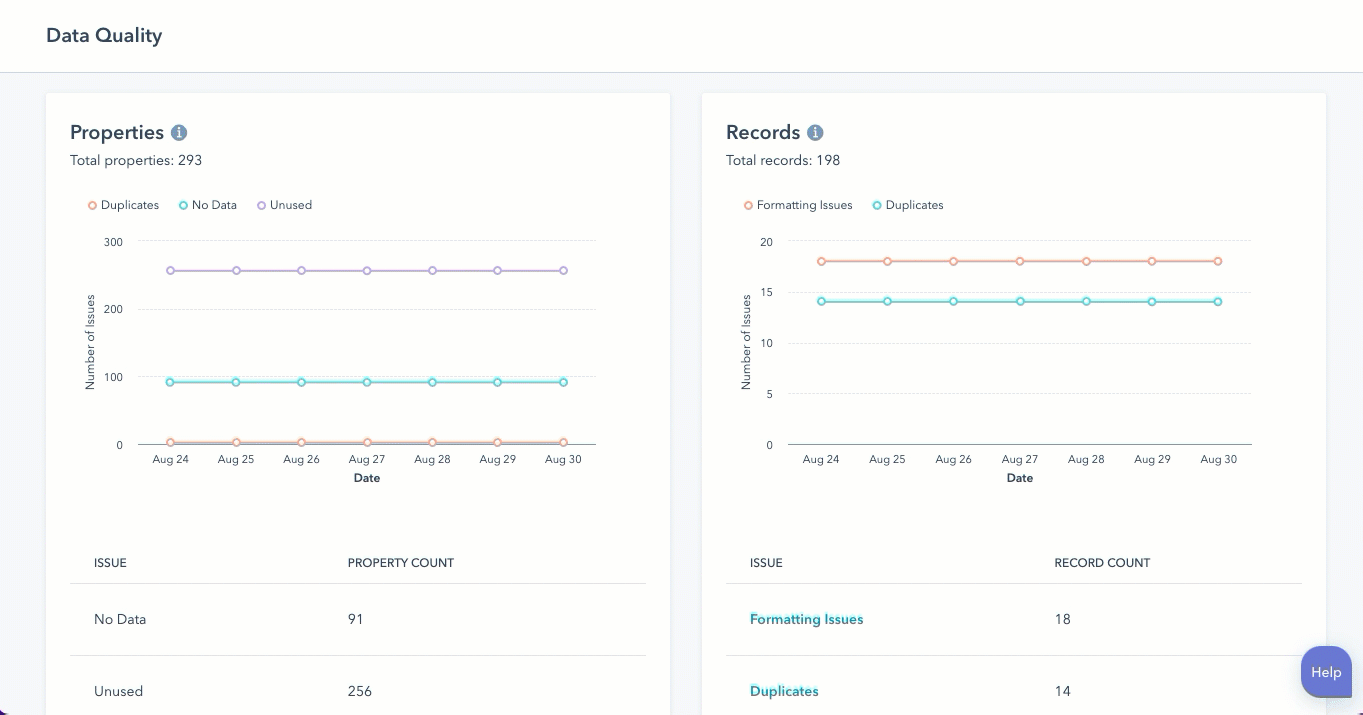
12. Manage Ad Campaigns inside HubSpot
When it comes to managing ad campaigns, having all your marketing efforts in one central location can be a game-changer. That's where HubSpot comes in. Instead of juggling multiple platforms like Google Ads or LinkedIn Campaign Manager, managing your ad campaigns directly within HubSpot offers several advantages.
First and foremost, managing ad campaigns inside HubSpot provides a seamless and streamlined experience. With all your marketing tools and data in one place, you can easily monitor and track the performance of your campaigns without the hassle of switching between different platforms.
HubSpot's ad management capabilities offers robust reporting and analytics features. You can easily track key metrics like impressions, clicks, conversions, and ROI directly within HubSpot's reporting dashboard. This allows you to have a comprehensive understanding of the performance and effectiveness of your ad campaigns, empowering you to make informed decisions and optimise your marketing efforts.
By aligning your ad campaigns with your CRM and lead nurturing workflows, you can ensure a seamless transition from ad engagement to lead generation and conversion. This integration fosters better collaboration between teams, eliminates data silos, and enhances the overall efficiency and effectiveness of your marketing efforts.
13. Monitor your competitors
With HubSpot's Social Tool, you can easily monitor and track your competitors' social media presence, allowing you to gain valuable insights and stay ahead of the game.
The HubSpot Social Tool offers a range of features that enable you to effectively monitor your competitors' social media activities. Firstly, you can track their social media profiles and pages, including Facebook, Twitter, LinkedIn, and Instagram. By adding your competitors' profiles to your monitoring list, you can see their latest posts, engagement metrics, and follower growth. This gives you a comprehensive view of their social media performance and allows you to benchmark your own efforts against theirs.
14. Set Up Workflows To Alert Your Team When Prospects Are On Your High-Value Pages
Setting up workflows in HubSpot can greatly enhance your lead nurturing efforts. By creating workflows that automatically alert your team when prospects are on your high-value pages, you can ensure timely and personalised follow-up, increasing the chances of converting these leads into customers.
Start by identifying the high-value pages on your website that are most likely to indicate strong interest or intention to purchase. These can include product pages, pricing pages, or demo request forms. Once you have identified these pages, you can set up workflows in HubSpot to trigger notifications to your sales or marketing team whenever a prospect visits these pages.
To set up these workflows, navigate to the workflows tool in HubSpot and create a new workflow. Choose the trigger "Contact has visited a specific page" and select the high-value page you want to track. You can further refine the workflow criteria by adding additional conditions, such as the number of times a prospect has visited the page or the duration of their visit.
Next, select the action "Send internal email" or "Create task" to alert your team. You can customise the email or task with relevant information about the prospect and the page they visited, ensuring that your team has all the necessary context to follow up effectively.
15. Set Contact Properties using Hidden Form Fields
Hidden Form Fields is a powerful feature provided by HubSpot that allows you to gather valuable information about your contacts and set specific property values based on their form submissions. This feature is especially useful when you want to track and segment contacts based on their actions, such as signing up for a webinar or downloading an ebook.
By using Hidden Form Fields, you can create custom fields within your forms that are not visible to the user but are populated automatically based on their form submission. For example, you can create a hidden field called "Webinar [Name] Signup" and set the value to "Yes" when someone fills out a form to register for a webinar. This way, you can easily identify and segment contacts who have shown interest in attending your webinars.
Similarly, you can create hidden fields to track other actions, such as ebook downloads, event registrations, or product inquiries. By setting property values based on these actions, you can gain valuable insights into your contacts' interests and preferences, allowing you to personalise your marketing efforts and provide them with relevant content and offers.
To set up Hidden Form Fields in HubSpot, navigate to the form editor and add a new field. Choose the field type as "Hidden" and provide a name for the field. Then, you can use workflow or automation tools to set the property value based on the form submission. This way, you can automate the process of updating contact properties and ensure that your data is accurate and up to date.
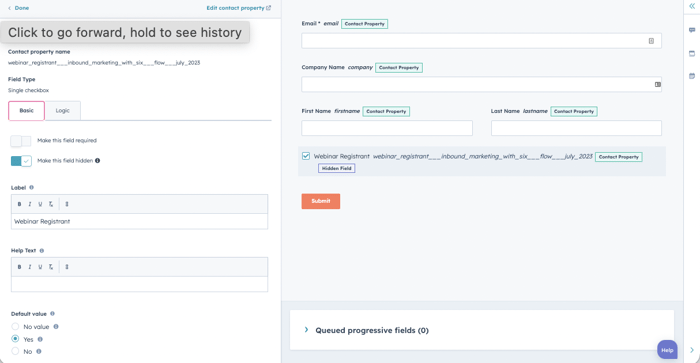
16. Analyse Marketing Emails using HubSpot Reporting
HubSpot has recently introduced new functionality that allows you to delve deeper into your email marketing efforts. With the custom report builder, you can now analyse your marketing emails and access a wealth of valuable performance metrics, such as open rate and click-through rate, all within the same platform as your CRM reporting.
This new feature provides marketers with a comprehensive overview of how their email campaigns are performing. By understanding the effectiveness of your emails, you can make data-driven decisions to optimize your marketing strategies and drive better results.
17. Use Customer Journey Analytics
Customer Journey Analytics is a powerful tool that relies on event data to provide valuable insights into customer behavior. Event data, also known as behavioural data, captures specific actions or interactions that occur at a particular moment in time. With HubSpot, you have the ability to automatically collect a wide range of first-party data, such as tracking marketing email opens, website page views, meeting bookings, and more. This data gives you a comprehensive understanding of how your customers engage with your brand.
By leveraging Customer Journey Analytics in HubSpot, you can gain a holistic view of your customers' interactions and journeys across various touch points. This enables you to identify patterns, trends, and opportunities for improvement. With this knowledge, you can make data-driven decisions to optimise your marketing strategies, enhance customer experiences, and ultimately drive better results for your business.
Here are some recommended strategies to optimise the customer journey analysis:
- Provide the option to make steps optional, allowing for alternative paths to be visualised. For example, enabling the ability to see those who downloaded the guide and immediately progressed to the opportunity stage.
- Implement branching to compare different steps in the customer journey. This could involve analysing how the downloaded guide, webinar, and ad campaign perform in driving sales meetings and opportunity creation. By comparing these steps, you can identify the most effective strategies for generating leads and conversions.
18. Use Smart Content
If you're not using smart content as part of your Inbound Marketing strategies, you're missing out on a big opportunity to connect with your audience on a personal level. HubSpot coined the term 'smart content' and it is a key tactic to creating a personalised experience for each and every visitor across emails and landing pages.
As visitors' experience with your company grows, their needs and interests change. Smart content enables you to nurture your leads by providing additional value every time they return to your site. With smart content, you can ensure your visitors are always seeing relevant offers (especially if you're working with different personas), rather than just static resources that aren't applicable to their goals.In this way, the potential of smart content is two-fold.
- For your website visitors, your site becomes a vast ecosystem of conversion opportunities because they don't have to see the same offer twice.
- Every landing page, form, CTA, or email has the potential to expose new content, services, or products to reconvert a visitor.
19. Set Target Accounts in HubSpot
By setting target accounts, you can streamline your marketing and sales efforts towards these specific companies or individuals. HubSpot provides a range of tools and features to help you effectively manage and engage with your target accounts.
Firstly, you can create custom properties and segments within HubSpot to categorise and prioritise target accounts. These properties can include criteria such as industry, company size, location, or specific attributes that make a company an ideal fit for your products or services.
Once you have identified your target accounts, you can use HubSpot's automation and personalisation features to tailor your marketing campaigns specifically for them. This can include sending personalised emails, creating targeted content, or offering exclusive promotions or discounts.
Additionally, HubSpot's CRM integration allows you to track and monitor the engagement and interactions of your target accounts. You can see when they visit your website, open your emails, or interact with your content. This valuable data can help you gauge their level of interest and prioritise follow-up actions.
Moreover, HubSpot's reporting and analytics capabilities provide insights into the performance and effectiveness of your marketing efforts towards your target accounts. You can track key metrics such as engagement, conversions, and ROI, allowing you to make data-driven decisions and optimise your strategies.
20. Set Up Sales Coaching Playlists
Sales coaching playlists in HubSpot allow you to curate a collection of training materials, resources, and best practices that are tailored to the specific needs and challenges of your sales team. These playlists can include videos, articles, presentations, and any other content that can help your sales representatives improve their skills and achieve their targets.
To set up sales coaching playlists in HubSpot, start by identifying the key areas where your sales team needs improvement. This could be objection handling, closing deals, or effective communication. Once you have identified these areas, gather relevant training materials from your internal resources or external sources.
Next, create a playlist in HubSpot and organise the training materials based on the specific topics or skills they cover. You can add descriptions and notes to each resource to provide additional context or guidance for your sales team. Additionally, you can set the order in which the resources should be consumed to ensure a logical progression of learning.







